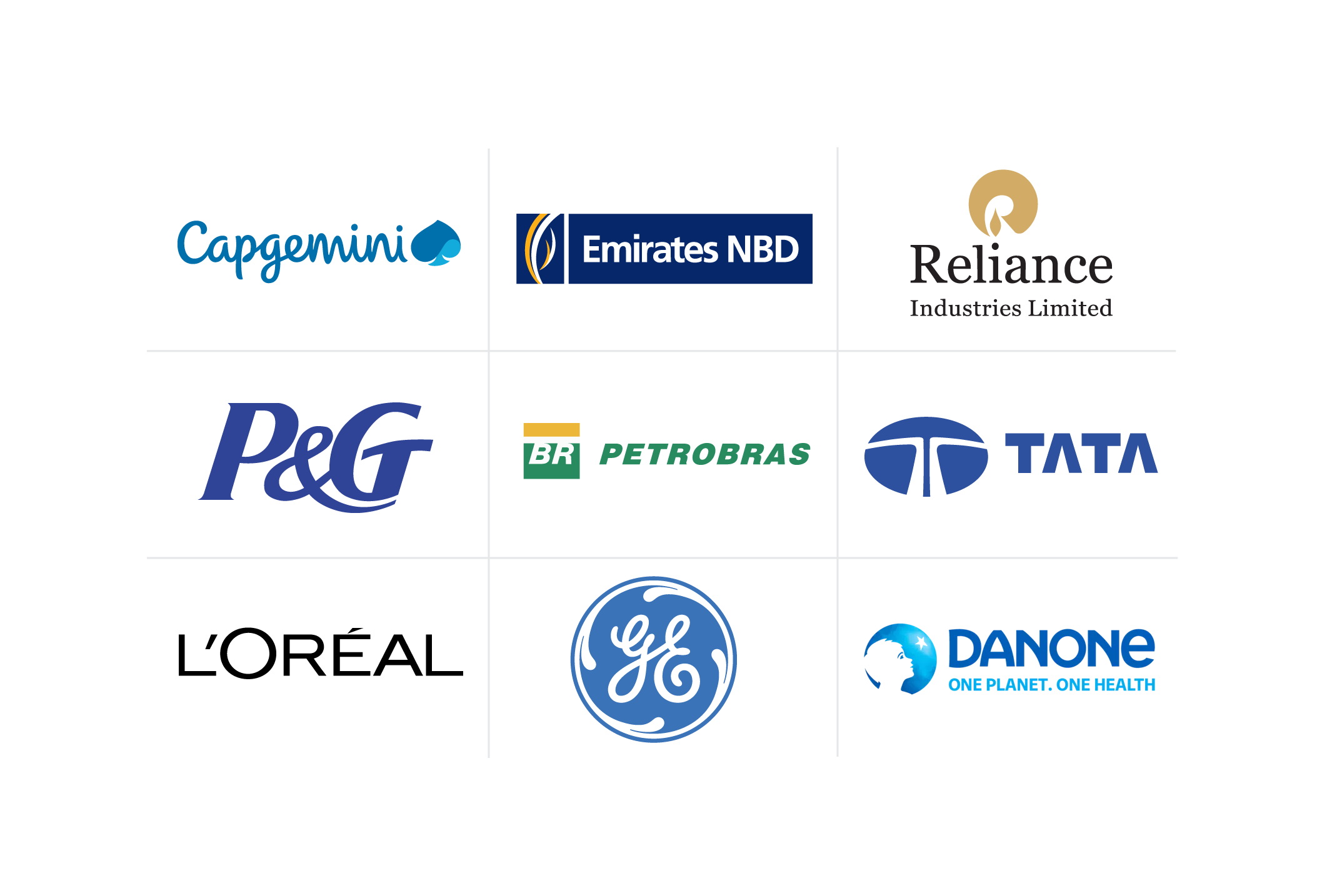What Is a Competency Gap? Examples and Tips for Analysis
Competency gaps are a natural part of the workforce, but they don’t have to become obstacles. Learn more about competency gaps within the corporate landscape, how to complete a competency gap analysis, and explore competency gap examples.
![[Featured Image] A group of employees engaging in corporate training after leaders explored what a competency gap is and how it affects their organization.](https://d3njjcbhbojbot.cloudfront.net/api/utilities/v1/imageproxy/https://images.ctfassets.net/2pudprfttvy6/6GaOmUa5BtcEExRmT9ErLt/965ad8664e6367811c876a805e4e8417/GettyImages-2082766624.jpg?w=1500&h=680&q=60&fit=fill&f=faces&fm=jpg&fl=progressive&auto=format%2Ccompress&dpr=1&w=1000)
Advances in technology, including automation and artificial intelligence, have become integral facets of the corporate landscape. Although emerging technologies offer numerous business advantages, they also present unique challenges. The ever-evolving nature of technology puts employees in positions where they must quickly learn new skills to stay competitive and up-to-date. Those unable to access appropriate upskilling develop competency gaps, areas where their knowledge and skills don’t match the current requirements of their roles. Business leaders can assess and address these gaps in a way that supports employees and helps keep their company on the cutting edge.
Explore the significance of competency gaps further, along with information about how you can complete a competency gap analysis to get a clear picture of your organization’s unique needs.
What are competency gaps, and why do they matter?
Competency gaps occur when employees need to build the specific skills, experience, or knowledge required to continue meeting a particular role's expectations. As corporations face rapidly evolving technologies and unfilled positions, employee skill gaps make it challenging to find the best employees to grow a business.
The World Economic Forum’s The Future of Jobs Report 2025 revealed that most of the leaders surveyed intended to adopt emerging technologies, with 85% of employers planning to prioritize upskilling their workforce. As a result, survey respondents indicated that 59 percent of employees will require upskilling and additional training by 2030, despite only half of the workforce having access to quality professional development opportunities []. The data from that 2025 survey underscores just how much of a challenge exists within the corporate landscape.
Defining competency gaps within a corporate landscape
Within a corporate landscape, competency gaps manifest as areas where current employees or those interviewing for empty roles don’t have the required skills to meet those expectations. For example, a software company might struggle to find people who have the right coding skills, or hospitals might have unfilled jobs in specific, specialized care roles.
Some of the industries facing the greatest impact from competency gaps include those in technology and hiring science, technology, engineering, and mathematics (STEM) roles. However, although technical skills are among those driving the skills gap, workplace skills are also in short supply. Some examples of skills often identified as part of the competency gap include:
Data science
Cloud architecture
Application development
Process automation
Big data
Technological literacy
Collaboration and teamwork skills
Critical thinking and problem-solving skills
Interpersonal and communication skills
Writing skills
The relationship between competencies and organizational success
Increasing employee skills can enhance engagement, loyalty, and productivity while filling critical roles, increasing retention, and helping to attract top talent, ultimately improving the company’s competitive edge. The relationship between competencies and organizational success is simple: the right competencies help employees thrive in their roles and help a business grow.
As a business leader, you might have goals and dreams for your company’s future expansion. However, if your workforce doesn’t have the skill set to meet those goals, you’ll find your company struggles to stay innovative.
Recognizing the indicators and impacts of competency gaps
The ability to identify indicators of competency gaps is a helpful first step toward addressing any issues that are occurring in your workplace. If facing any of these indicators, consider addressing competency gaps. Some indicators of competency gaps include:
A consistent struggle to fill critical roles
Feedback from employees that reflects dissatisfaction with their career path or work expectations
Clients and customers aren't receiving the full support they need due to either staff shortages or undertrained employees
Managers struggle to successfully manage their teams, including through decision-making, hiring, and training
A marked decline in overall business performance
Impacts of competency gaps on employee performance
When employees have competency gaps, companies risk those gaps, resulting in a decline in that employee’s performance. Employees facing competency gaps may struggle to fully participate in a company’s ecosystem, resulting in unemployed and underemployed workers, even as businesses struggle to fill positions. In turn, it can harm companies’ competitiveness and reduce living standards for many middle-class workers.
Addressing employee competency gaps helps not only to further advance your company’s goals through a highly skilled workforce, but also the employees themselves tend to be happier and more productive. It's also notable that organizations that invest in their employees' professional development not only fill skills gaps within the business but also tend to enjoy improved employee retention due to a boost in employee engagement.

The process of assessing and analyzing competency gaps
Having the tools to identify the precise skills missing or underrepresented in your workforce is critical, which is why the use of competency gap audits or analyses is so vital to the overall health of your business. Conducting a competency gap analysis helps you pinpoint the areas where employees most need additional training. To successfully conduct a competency analysis, you’ll want to follow these key steps:
1. Assess and state company goals.
First, address why you want to conduct a competency gap analysis. Is it because you are implementing new technology in the workplace, or are you experiencing worker shortages? Knowing why you want to analyze for competency gaps will help you understand what to look for.
2. Determine the skills needed to meet business goals.
Once you know your business goals, you can identify which skills you’d like your team to have to help meet those goals. For example, if you’d like to implement new software within the next three to five years, then technology or coding skills would be on your list.
3. Evaluate current skills.
Next, it’s time to assess the skills your workforce currently has. Examine performance reviews, implement surveys, and meet with executives to learn more about your company's current landscape. Speak to professionals across all departments to gain a comprehensive picture of what your employees know now and get a sense of where gaps might exist in the future.
4. Implement a training and action plan.
Once you better understand what competency gaps exist within your workplace, you can create and implement an action plan. Increasing wages to attract talent and offering training opportunities for your current workforce could help close gaps. Additionally, allowing employees to be involved in the process can help them become more invested in their professional development, further helping to increase engagement.
Strategic approaches to addressing competency gaps
Addressing the competency gaps is the final step of a competency analysis, and it allows you to be strategic and creative in how best to help your unique workforce upskill and reskill. Consider the following strategies to help you act on what you learn after completing a competency gap analysis.
Developing tailored training programs
Training programs customized to employees’ specific needs help close competency gaps effectively by ensuring that the time, effort, and money spent are all going toward real, actionable changes. Cohort-based learning provides the chance for employees to share knowledge and progress while still focusing on skills necessary for their careers. Modular learning helps to break down big lessons in a way that provides the opportunity for employees to learn applicable skills.
Succession planning and talent development
Part of closing competency gaps is succession planning, or the investment in current employees to develop their skills and expertise for future leadership roles. Once you have a clear image of where you’d like your company to be in the next five or so years, reach out to HR and management to help identify workers who have the potential to develop into advanced roles. Developing talent is critical for a competitive workforce that takes advantage of the knowledge and seniority of current employees.
Communicating competency gap findings and strategies
Understanding competency gaps within your company provides the opportunity to collaborate with employees by communicating those gaps and finding strategies that benefit everyone. It’s essential to make it clear to employees that competency gap assessments are a positive move forward. Impress upon them that bridging the gap offers them a chance to take control of their careers and build their professional strengths.
Getting started with ����vlog�����ۿ�
Addressing competency gaps in a corporate landscape is vital for keeping your company competitive and poised for future growth. By identifying skills gaps and providing opportunities for your employees to invest in their futures through talent development, you'll create a workplace culture that fosters innovation. ����vlog�����ۿ� for Business provides access to high-quality courses tailored to various needs, including building technical and workplace skills. Explore the offerings and benefits of ����vlog�����ۿ� for Business and learn more about how to close competency gaps today.
Your employees will gain access to content from 350+ leading universities and industry partners, where they can build real-world experience with innovative skills, tools, and technologies while earning globally recognized credentials. Our customizable, scalable learning solutions balance workplace and technical skills training in diverse formats, from video clips to guided projects and Professional Certificates. Accelerate your digital transformation and equip employees to drive growth with ����vlog�����ۿ�.
Article sources
1. World Economic Forum. “, https://www.weforum.org/publications/the-future-of-jobs-report-2025/digest/.” Accessed June 12, 2025.
This content has been made available for informational purposes only. Learners are advised to conduct additional research to ensure that courses and other credentials pursued meet their personal, professional, and financial goals.

